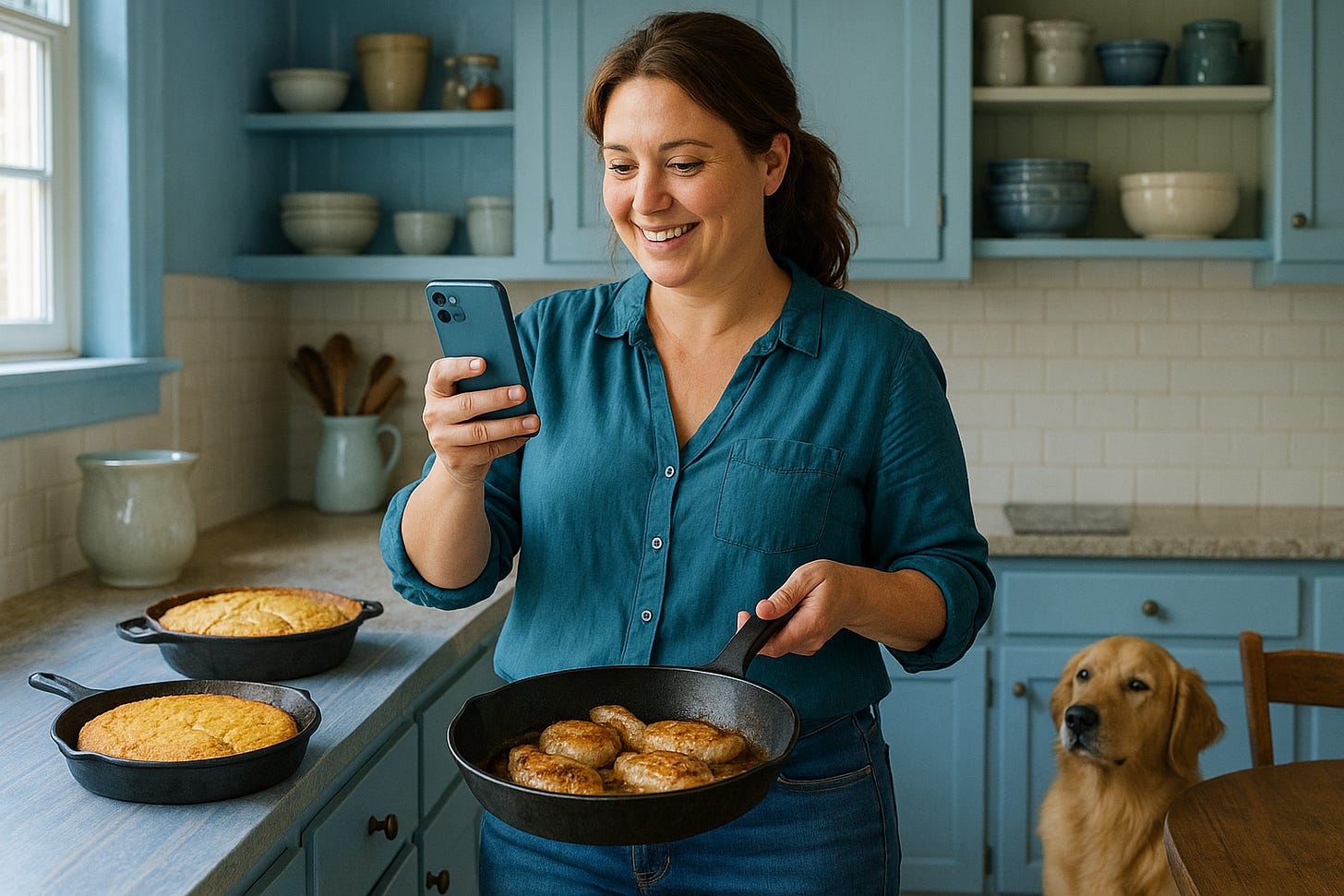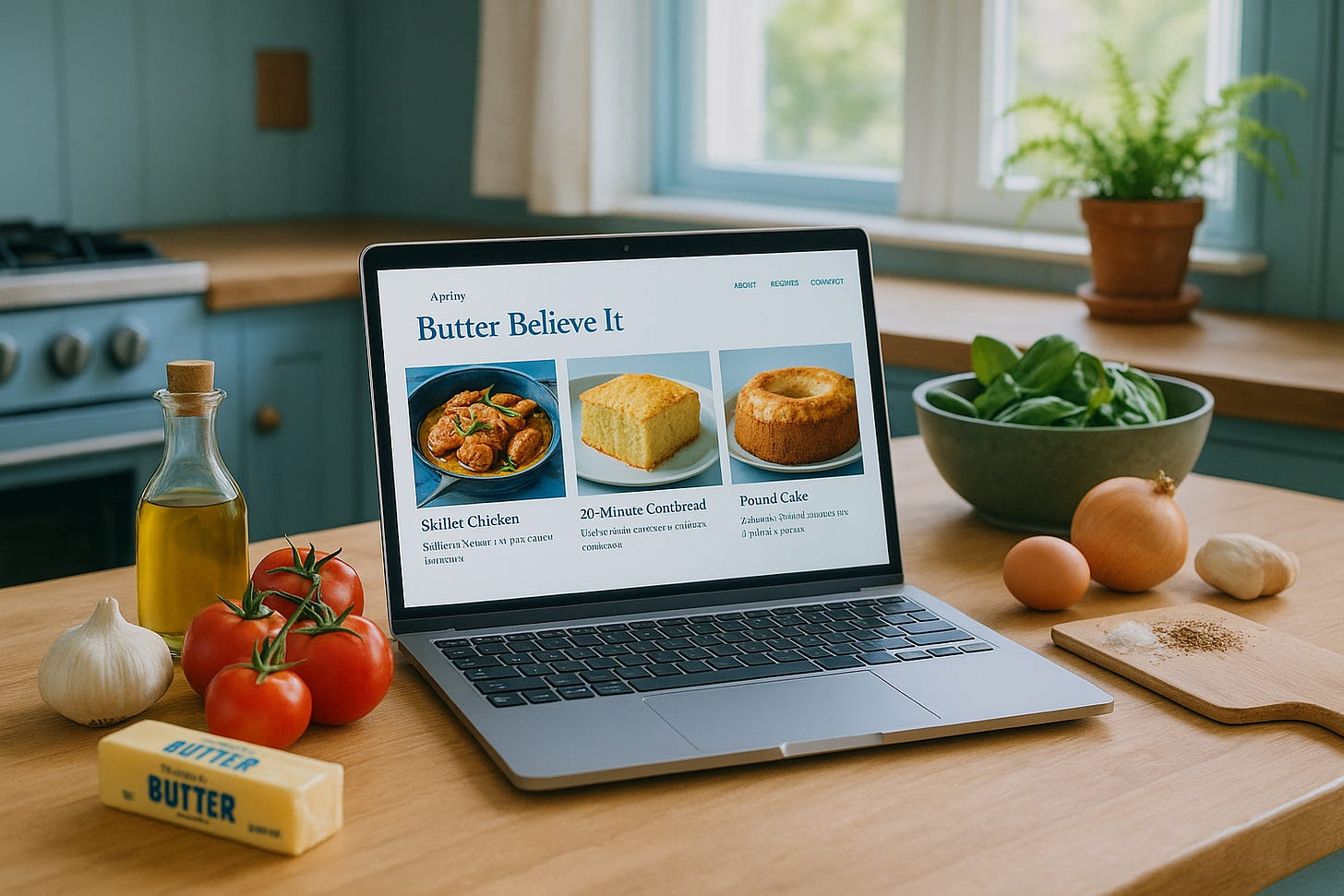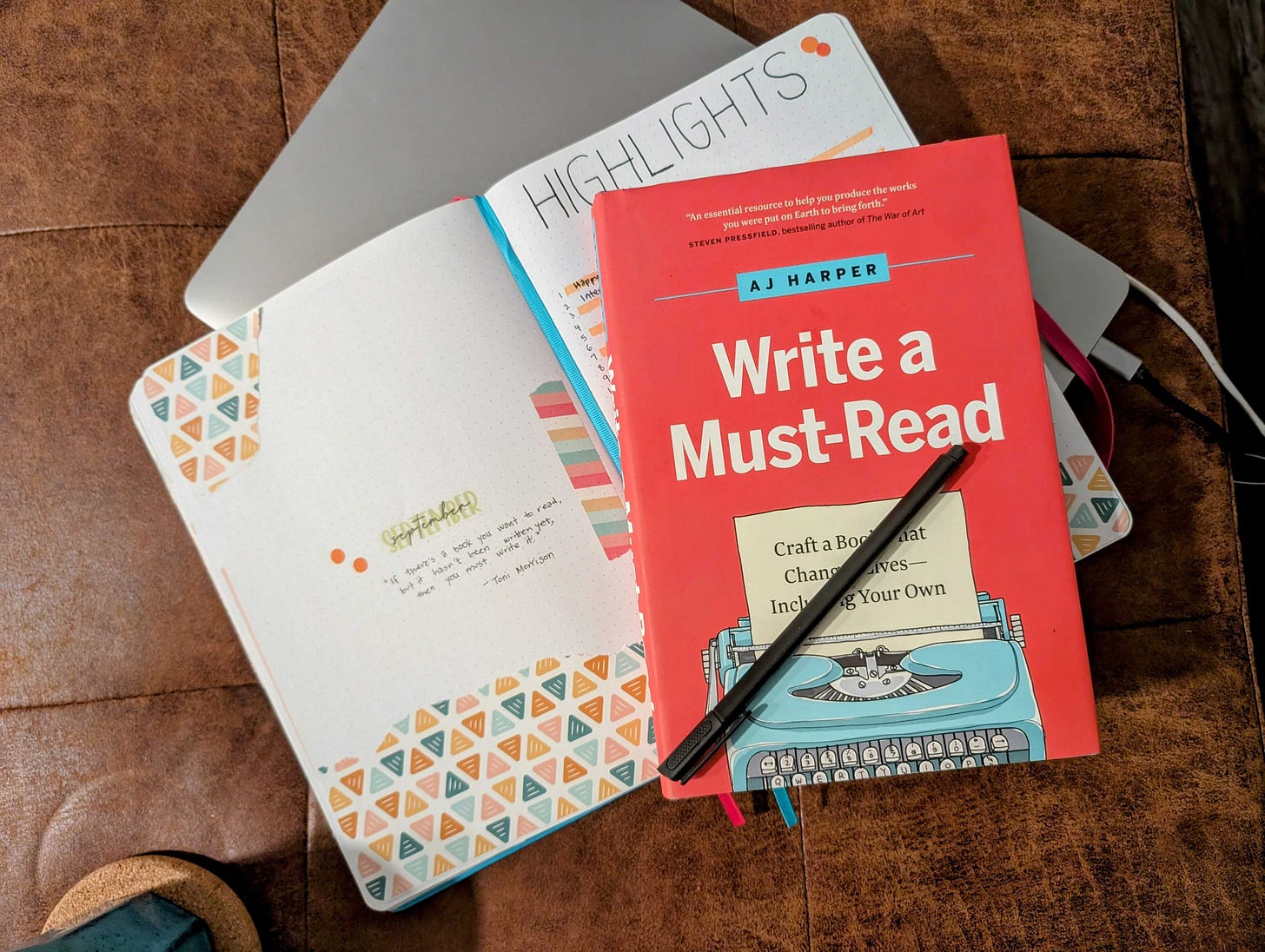Content at a crossroads
The silent struggle food bloggers face before deciding what’s next
Every food blogger reaches a moment when the path forward isn’t so clear anymore. Recipes still get published, the photos still shine, and the audience still shows up—at least a little, but something has shifted. What once felt like momentum now feels more like maintenance.
It usually happens quietly. A post that once would have taken off barely moves the needle. Ad revenue doesn’t cover the grocery bill. Brand partnerships trickle in with rates that feel insulting. Licensing feels like a door that’s half open but impossible to step through. You’re creating, yes, but you’re not sure what it’s adding up to.
That’s what I call the content crossroads. It’s where many food creators land after years of pouring their nights and weekends into a blog without a clear sense of what comes next. You know your content has value, you just don’t know how much, or in what way. Should you double down and finally treat it like a business? Try licensing your recipes to platforms that need them? Or accept that maybe it’s time to walk away?
The hard part is, you can’t make that choice if you don’t actually know what you have.
I’ve seen creators scroll through years of their own archives and realize they couldn’t answer basic questions:
Which recipes consistently drive traffic?
Which ones are structured well enough to be discovered beyond the blog?
Which ones might hold real licensing potential?
Without that clarity, every option feels like a gamble.
This is the reality for many food creators right now and it’s exactly where one blogger, April, finds herself.

She built her site around easy weeknight meals that mirror her life: two kids, a husband who works late shifts, and Daisy the golden retriever waiting under the kitchen table for crumbs. She’s great at photography, her iPhone shots look like they belong in Bon Appétit. For a while, traffic rolled in and her blog felt like it was on the rise.
But eight years later, the spark has faded. She’s standing at the same content crossroads so many of you are.
Here’s her story.
Butter, babies, and beginnings

Back in 2017, April launched Butter Believe It as a sanity saver. With diapers, dinner, and deadlines all stacked against her, cooking was the one place she felt in control. Her blog wasn’t about fancy plating or elaborate technique—it was about feeding her family with comfort food that worked on a Tuesday night.
If it needed butter, it went on the blog. And readers loved her for it.
When the spark turns into slog
Fast forward eight years, and the story looks different. Traffic is flat, ad checks barely cover a week of groceries, and the licensing deal she once pinned her hopes on? Gone, with no explanation.
Her inner dialogue keeps circling the same questions:
“Do I keep grinding? Should I finally try to license these recipes? Or is it time to just let it go?”
What used to feel like creative joy now feels like a hamster wheel. And April, like so many creators, is tired.
The late-night scroll that changed everything
One night, April found herself scrolling through her own archives, hundreds of recipes, years of photos, and realized something she’d never admitted:
She doesn’t actually know what she has.

Which posts are truly carrying her site? Which ones have the metadata to be discovered on new platforms? Which ones could she package and license tomorrow?
She has no clear picture. And without it, every option—grow, license, or let go—feels like a gamble.
April doesn’t need another random brand deal. She needs clarity. She needs to dig into her site and finally see her recipes for what they are: assets. Only then will she know the right path forward.
If this feels familiar…
April’s story isn’t unusual. It’s the quiet reality for countless food creators who started with passion and built something real, yet now aren’t sure if their blogs are businesses, hobbies, or something in between.
And here’s the truth: you can’t decide what’s next until you know what you actually have. Without clarity, every decision feels like guesswork. With clarity, every option, grow, license, or step away, becomes a choice you can make with confidence.
What about you? Have you ever felt at a content crossroads like April? Drop a comment. I’d love to hear your story.
What’s your next move?
If you’re standing where April is, the Content Crossroads Audit was built for you.
It puts everything in one place:
Which of your recipes perform best (and why).
Where your metadata or structure is holding you back.
What opportunities are hiding in your existing library.

The audit shows you what you actually have, so you can make a confident decision about what’s next.
The Blueberri Stack
Food × Tech news — last 7 days, why it matters
LinkedIn isn’t Facebook, but posting more evidently still works
Buffer just crunched 2M+ posts and found the sweet spot is 2–5 times per week. If you can keep quality high, daily (or even more) can work, but consistency matters more than sheer volume.
Why it matters for bloggers: LinkedIn is one of the best places to land partnerships and licensing deals. If you’ve been posting once in a blue moon, this is your nudge to show up more often. But posting more without structure just means more buried posts. The real win comes when your content is set up to travel so every LinkedIn post is pointing back to recipes that platforms can actually surface, reuse, and reward.
Search wars: Google keeps Chrome, AI keeps creeping in
A federal judge ruled Google won’t be forced to sell Chrome or Android, though it must drop exclusive agreements and share more data. The twist? The judge pointed to generative AI (ChatGPT, Perplexity) as proof search isn’t untouchable anymore.
Why it matters for bloggers: This is another reminder that Google traffic is fragile. AI-driven rivals are reshaping how recipes get found. Structured content is what keeps you discoverable no matter where people search.
Kraft Heinz pulls the old “it’s not you, it’s me”
Kraft Heinz is splitting into two companies, one for pantry staples (Heinz ketchup), the other for snacks and high-growth bets.
Why it matters for bloggers: Breakups = opportunity. New companies test new marketing. Translation: more chances for bloggers to pitch recipes, content collaborations, and licensing deals while they’re shaking things up.
Behind the book
It’s full steam ahead on my new book. It took me two weeks (and a wall of Post-its fueled by Ethiopian coffee) to refine this, but here’s the announcement coming to a social media platform near you:
Create Once, Share Everywhere

What my book’s about
I’m writing for food creators (bloggers, YouTubers, recipe developers) who want their content to be seen, trusted, and earning long after it’s published. Many feel stuck chasing algorithms, traffic spikes, and short-lived brand deals and may not realize their content is an asset.
By the end of this book, you will see your content as an asset and know how to structure it so it stays visible, valuable, and adaptable no matter how platforms or technology change.
Where I am now
Drafts: Foreword, intro, Chapters 1–3
This weekend: Building the outline (though I might jump ahead and draft the final chapter first—it’s the heartbeat of the book!)
This book isn’t just my story; it’s yours, too. April’s crossroads are the same ones many of you face. Create Once, Share Everywhere will help you see the path forward.
Until next time, come for the butter, stay for the metadata.
Your friend in food,
Sandie



This is great information, Sandie and a great reminder to check our library of posts and to see them as assets. I have been working behind the scenes updating posts and truly wish I understood more of the technical side. Some updates have made some major improvements and some haven’t moved the needle, but in the end so thankful that my site has improved after some Google updates. Super curious, how you recommend a food blogger use LinkedIn more.